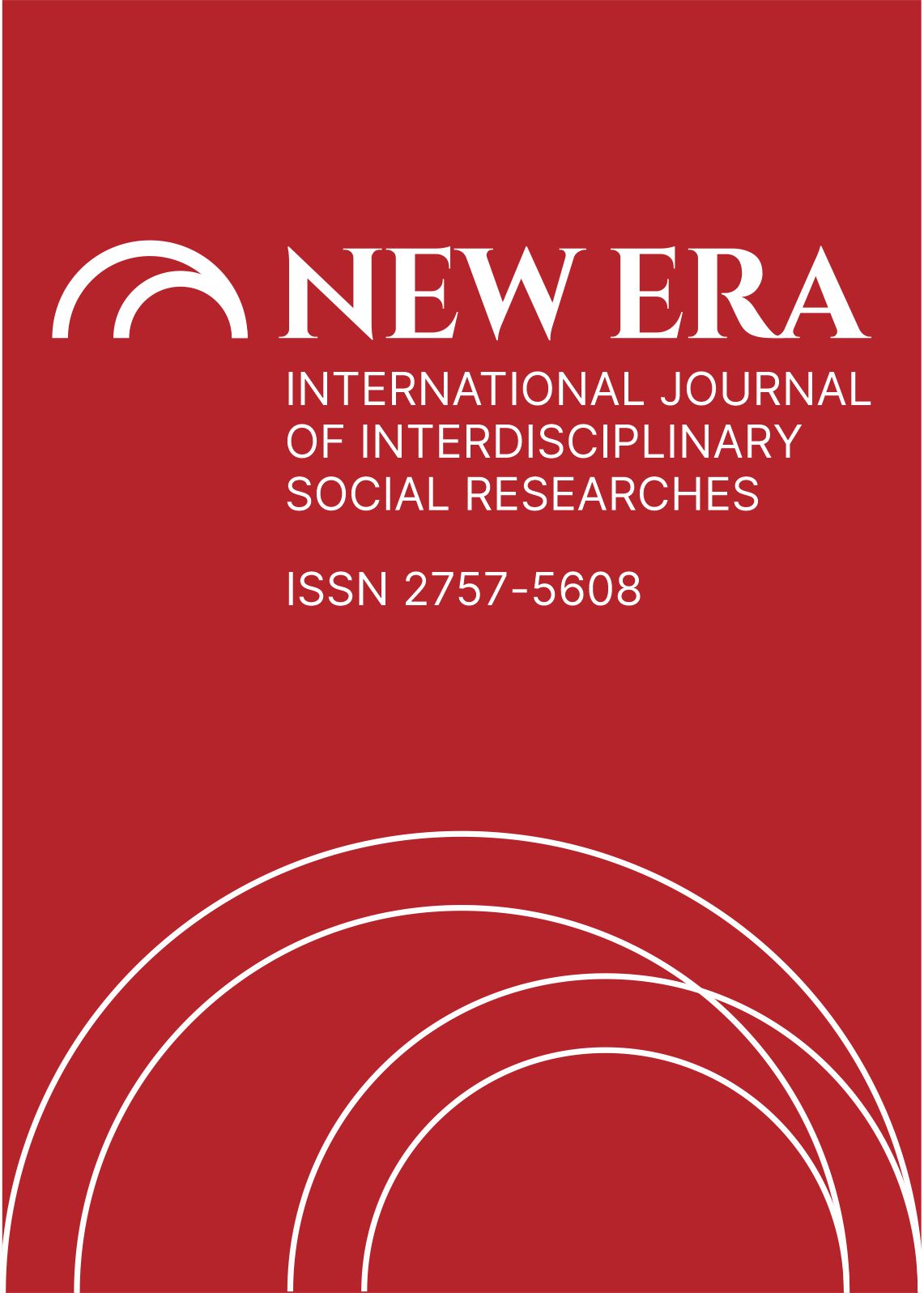AB-ANBAR: İRAN’IN SICAK KURAK BÖLGELERİNDE SU DEPOLAMADA BİR SÜRDÜRÜLEBİLİR MİMARİ YÖNTEMİ
DOI:
https://doi.org/10.5281/zenodo.7952566%20%20Anahtar Kelimeler:
Kanuni Sultan SüleymanÖzet
İran’ın geleneksel mimarisi her zaman insanların ihtiyaçlarını karşılamak için rasyonel, çevre ve iklim ile uyumlu biçimde oluşmuştur. İran’ın geniş platosu, dünyada kurak ve yarı kurak bölgede yer almaktadır. Ayrıca çevreye zarar vermeden en az imkânlarla en iyi girişimleri gerçekleştirmişlerdir. İran’ın kurak bölgelerinde, yağışlı mevsimlerde suyu depolamak ve yılın geri kalanında kullanmak üzere yapılan Ab- Anbar'ların, iklim uyumlu bir mimarı tasarım yöntem olduğunu söyleyebiliriz. Eski İran inançlarında, gelenekler, din ve kültüründe su, insanın yaşamı için hayati bir madde olarak yüksek değer taşıyan kutsal bir konuydu. Öte yandan, verimsiz yıllık yağışlar, yüzey suyunun elverişsiz dağılımı, mevsimsel akışların dalgalanması ve su talebinin karşılanması nedeniyle: eski İranlılar, su kullanımını optimize etmek için benzersiz yöntemler oluşturdular. Su korumayı optimize etmenin benzersiz yollarından biri, mimari bir yöntem kullanarak yeraltı su rezervuarları (Per. Ab-Anbar) inşa etmişlerdir. Ab-Anbar, üstü kapalı bir yer altı su sarnıcıdır. Bu yeraltı su depolar (Ab-Anbar), içme suyu temini için bir tarihi hidrolik yapılardır. Günümüzde bu yapıların çoğu hala işlevseldir ve tarihî miras olarak devlet tarafından yenileme yapılarak korunmaktadırlar. Yeraltı su depoları kurak bölgelerde, silindir, bazen dikdörtgen biçimde ve tamamen toprağa gömülü olarak inşa edilirdiler. Su deposuna erişim bir yeraltı merdiveni ile sağlanırdı. Kentsel açık mekânlarda yer altı su depolarının çatısı zemin kotunda kubbe görünümündedir. Yeraltı su depolarında kullanılan yapı malzemesi tuğla ve Sarooj adı özel bir harç kullanılırdı. Ab-Anbar strüktürü çok kalın duvarlar ve zemin seviyesinin altında inşasından edildiğinden dolayı su oldukça soğuk kalır. Ayrıca ab anbarın havalandırması için binanın dört köşesinde rüzgâr kuleleri inşa ederdiler. Bu çalışma kapsamında İran’ın sıcak-kuru bölgelerinde ortaya çıkan iklim uyumlu Ab-Anbar binaların tasarım ilkeleri incelenecektir.
Referanslar
Acres, Edward. “What Is Eco Architecture?” Erişim 11 Ocak 2023. https://www.acresarchitects.co.uk/category/hints-tips/
Bauten Entdecken, “Wie funktioniert die Kühlung des Wassers bisher?”. Erişim 11 Ocak 2023. https://bautenentdecken.tumblr.com/
BNA Hollanda Mimarlar Kraliyet Enstitüsü. Erişim 11 Ekim 2022. www.bna.nl
Broadbent, G. Brebbia, C. A. (2006). “Ecological Propriety and Architecture. Eco Architecture: Harmonisation Between Architecture and Nature”. Edited WIT Press.
Daiiallah, Mohammad. et al. (2014). “Principles of Sustainable Development in Architecture and Urbanism of Iran’s Hot and Dry Climate in the Past”. Danesh Nama (Tech.-Prof. Mon. J.) 21(2014), 15-21.
İbrahim, I. “Socio-Environmental, Impact in Eco-Architecture”. WIT Transactions on Ecology and the Environment. WIT Press, 128 (2010), 185-195. ISSN 1743-354 (online). Doi:10.2495/ARC100161.
Kasmaee, Morteza. Climate & Architecture. Khak, Isfahan, Iran. 2003.
Coğrafya dünyası, Erişim11 Ekim 2021. https://www.cografya.gen.tr/siyasi/devletler/iran.htm
Ghani, Fatima. “Issues in sustainable Architecture and Ppossible Solutions”. International Journal of Civil & Environmental Engineering, (IJCEE-IJENS) 12/1, (2012) 21-24.
Gholami, Siamek et al. “Development of Ancient water Storage Systems Namely Ab-Anbar by Evaluation, a Technical Method in Iranian Deserts, (By Environmental Aspects Structures)”. The First Sustainable Development Conference of Engineering Systems in Energy, Water and Environment (SDEWE). (21 May 2015), Mech. Eng. Dept., Iran University of Science and Technology, Tehran, Iran.
Ghiai, Mohammad Mehdi, et al. “Investigation and Modeling of Energy Cnsumption of Tall Office Buildings in Iran’s Hot-Arid and Cold Climate Conditions”. International Journal of Low-Carbon Technologies 16 (2021), 21–34.
López, F. J. Soria. “Architecture and Nature at the End of the 20th Century: Towards a Dialogical Approach for Sustainable Design in Architecture”. WIT Transactions on The Built Environment, 86, (2006) 23-33. ISSN 1743-3509 (online)
Meserret, Hüseyin. Water Reservoirs of Yazd: Income on Their Background, Function, and Structure. Yazda Publications, Tehran. 2011.
Mikaeili, Mahshid. “İran’ın Sıcak-Kurak Bölgelerinde Eski Dönem Eko-Mimari”. Mimarlık Bilimleri ve Sürdürülebilirlik. Ed. Ertaş Beşir Ş. et al. 459-492. IKSAD. 2021. ISBN: 978-625-8061-43-7.
Mikaeili, Mahshid. İran’da Bazı Yerleşim Alanlarında İklimsel Sorunlara İlişkin Geleneksel Tasarım Önerileri ve Uygulama Örnekleri Ankara: Ankara Üniversitesi, Fen Bilimler Enstitüsü, Peyaj Mimarlığı Anabilim Dalı (Doktora Semineri). 2012.
Mikaeili, Mahshid ve Memlük, Yalcin. “Badgir: Design with Nature, a Traditional Architectural and Climate Element in Hot-Dry Region of Iran”. International Conference of Architecture: Architecture and Technology. (15-17 November 2012). 136-146. ICON I, Proceeding Book. Selcuk University, 2012.
Olgyay, Victor. Design with climate: Bioclimatic Approach to Architecture Regionalism. Prinston University Press. 1962.
Pirnia, M. Karim. “Iranian Architecture Stylistics”. ed. Memarian, G. Saadi. Tehran, Iran. 2005.
Saeidian, Amin. “Ab-anbar, Sustainable Traditional Water Supply System in Hot Arid Regions, Remarkable Example of Iranian Vernacular Architecture”. Sustainable Architecture, Elixir Sustain. Arc. 56A, (2013), 13584-13590.
Zoroastrian Heritage. “Kariz: Ancient Water Distribution Channel”. Erişim 18 Ocak 2023. https://www.heritageinstitute.com/zoroastrianism/kareez/index.htm
Yousef, Fazeleh et al. “The Role of Ab-Anbars in the Vernacular Architecture of Iran with Emphasis on the Performance of Wind-Catchers in Hot”. MDPI: Heritage, 4 (2021), 3987-4000 https://doi.org/10.3390/heritage4040219
İndir
Yayınlanmış
Nasıl Atıf Yapılır
Sayı
Bölüm
Lisans
Telif Hakkı (c) 2023 NEW ERA INTERNATIONAL JOURNAL OF INTERDISCIPLINARY SOCIAL RESEARCHES

Bu çalışma Creative Commons Attribution-NonCommercial 4.0 International License ile lisanslanmıştır.


